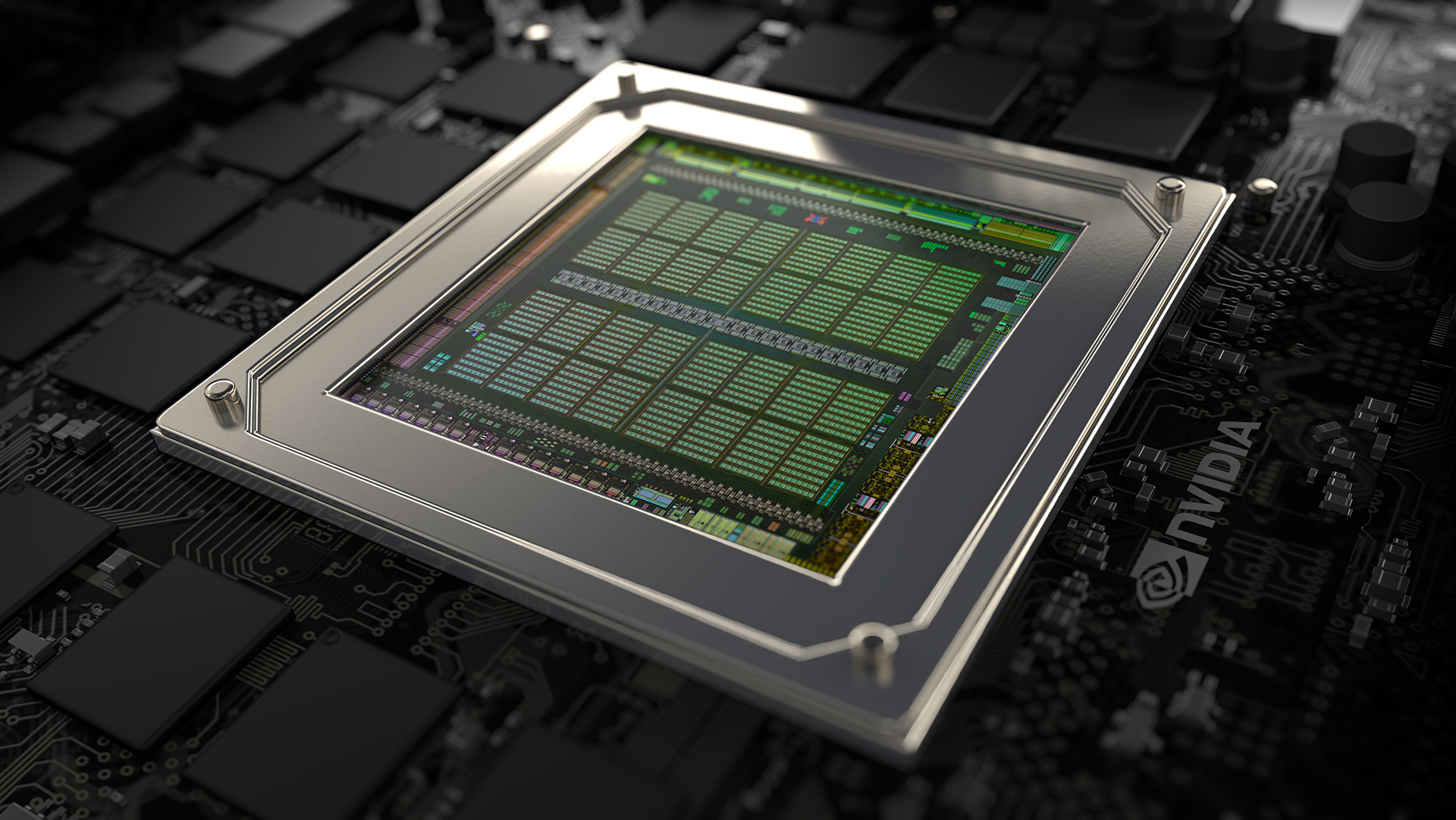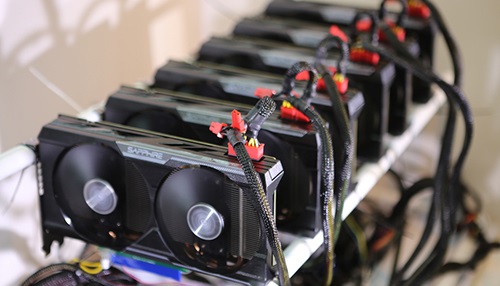Nvidia in 2018: faster and faster, pricier and dicier
Another year on top

2018 started off with all the makings of a hot year for Nvidia. Everyone was still talking about cryptocurrency, and Nvidia’s graphics cards were caught up in the middle of the mining craze. The prices of existing Nvidia cards like the GeForce GTX 1080 Ti were nowhere close to as low as they should have been, and the company’s flagship cards were long overdue for an update. Thankfully, we just got that with three brand new Nvidia Turing GPUs plus a whole new ray tracing revolution – at least in one game anyway.
We’re going to take an in-depth look at how the year actually played out and it’s been a challenging one for big green, to say the least. Nvidia has arguably ended the year in a tougher spot than when it started. Although the company has made some of its biggest leaps forward, they’ve also came with heavy caveats.

Nvidia at the start of 2018:
Nvidia kicked off the new year at CES 2018 talking about its big moves with powerful cards that would go into data centers and power AI, like that used in self-driving cars.
It also hyped up the Max-Q versions of its 10-Series graphics cards, which offer desktop-like performance in thin-and-light laptops.
But, what the company wasn’t doing at that time was announcing the replacements to the 10-Series. It showed off the new Titan V that was hardly a gaming-targeted, consumer-facing product, but little did we know that its Tensor cores would make their way into its new line of 20-series GeForce GPUs.
Still, in spite of nothing for gamers to get too excited about early in 2018, Nvidia was doing well.

Gamers’ pains, Nvidia’s gains:
One thing that was driving Nvidia at the beginning of 2018 was cryptocurrency. Popular cryptocurrencies like Bitcoin were booming, and miners needed powerful graphics cards to mine many of them. Nvidia’s were the most powerful around and the demand was huge.
Sign up for breaking news, reviews, opinion, top tech deals, and more.
Nvidia recorded record revenue in early 2018 with a huge bump in graphics card sales. The company didn’t attribute the surge solely to cryptocurrency, rather crediting “new games, holiday-season demand, iCafe upgrades, esports and cryptocurrency mining,” in an earnings call.
As good as the sales were for Nvidia, gamers were hurting for much of the first half of 2018. The high demand for mining graphics cards drove prices up, making it hard for gamers looking to upgrade or build new PCs without spending a fortune.
Nvidia made some efforts to ensure the core audience of gamers could still get their hands on GeForce graphics cards. One of the schemes Nvidia used to prevent miners from gobbling up all the GPU stock was encouraging retailers to prevent bulk buying. Some shops even went further by bundling graphics cards with monitors and other gaming PC components that gamers would need but miners wouldn’t.
Fortunately for gamers, the cryptocurrency gold rush didn’t last forever. By the end of the first half of the year, it already felt like no one was talking about it. In May, we learned Nvidia had continued seeing strong sales for graphics cards going to cryptocurrency miners, but the company was predicting a significant decline. And, not long after, it definitely started to feel like crypto was snapped away by Thanos right along with half the Avengers.

RTX On
When July rolled around, gamers finally started to see things turn back into their favor. Amazon Prime Day kicked off, and with it actually came some good deals on powerful graphics cards. It was a major swing to go from cards scarce and priced hundreds of dollars above retail pricing to having plenty of cards available at discounts.
Any gamers who’d been starving for a new graphics card and snatched one up in these deals probably felt the sting of August’s announcement, though.
In August, Nvidia began announced the Turing architecture along with a new series of ray tracing Quadro graphics cards for the enterprise market. Although these ultimately weren’t the gaming GPUs we were looking for, it spelled out basically everything the next-gen GeForce series would be.
After kicking up a tempest of speculation, leaks and rumors, Nvidia would launch its new series of graphics cards just a week later: the RTX 20-Series. This new launch included a top-tier RTX 2080 Ti, an enthusiast-tier RTX 2080, and a mainstream RTX 2070.
Those new cards weren’t just shown off as the next step in performance with more compute cores and faster clock speeds. Instead, the company boasted its revolutionary real-time ray tracing and AI-assisted supersampling technology would vastly improve games visual fidelity.
None of the cards were announced cheap. Nvidia offered pre-orders on the Founders Editions of each card, with prices from $599 (£569, AU$899) to $1,199 (£1,099, AU$1,899). Cards from board partners were priced a bit lower, but those cards didn’t show up right away, and they didn’t show up at the lower prices too soon either.
Those high prices may have been part of a push to clear stock of older 10-Series graphics cards. GamersNexus reported in early November that GTX 1080 Ti stock was getting low, and that will hopefully lead to better prices for gamers, as the 20-Series cards can actually start to fill the void left behind by their respective 10-Series versions.

Everything isn't always sunshine and reflections
Putting the price of Nvidia’s new cards aside for a moment, there was a serious issue with the new cards that had the best GPU gamers could buy turning into hot garbage soon after installation.
Some gamers with the expensive RTX 2080 Ti were suffering crashes and errors from their cards, and some had their shiny new cards completely brick. That’s not the kind of issue you want to see from the newest and best graphics card on the market. Some customers who got their cards replaced even experienced the same issues on the replacements.
While those problems should be covered by warranty and may be sorted out by Nvidia in production or by board partners, there’s another issue with the 20-Series cards that gamers are facing: fancy new features that are all but non-existent.
The new 20-Series cards have a sizable portion of the GPU dedicated to AI-focused Tensor Cores and RT Cores. Those special cores promise the smart supersampling of DLSS and the real-time ray tracing that makes light and shadow look substantially more realistic, respectively.
That all sounds great until we consider that only Battlefield V supports real-time ray tracing and only Final Fantasy XV supports DLSS. No game to this date supports both. While many games have been slated to build in support for these features, it’s always worth being skeptical about future promises from tech companies when your cash is on the line — anyone who bought an Xbox One in hopes of playing VR games or Scalebound can surely relate.
The issue is made a little worse by performance hits that come from enabling ray tracing. The feature, as first implemented, resulted in dramatically reduced frame rates in Battlefield V. Though an update helped bump performance back up, the initial drop just further highlights the dubious state of the features 20-Series cards offer.

What does 2019 have in store for Nvidia?
Though ray tracing and DLSS may still linger in a vaporware-like doubt, there’s no denying Nvidia’s new line-up of cards this year has kept it at the top for now. But, the focus on new features may come around to bite Nvidia.
AMD has yet to announce new cards, and rumors have suggested they’re coming. Worse still for Nvidia (better for gamers), the rumors suggest the new cards will drastically undercut the price of RTX 20-Series cards.
An AMD Radeon RX 3060 may come at half the price of a Nvidia RTX 2070 while offering similar performance and skipping ray tracing. AMD will likely leave the RTX 2080 Ti on its throne, as the company didn’t produce a card to match up against the Nvidia GeForce 1080 Ti last time around.
This all leaves the core market of gamers with the possibility of compellingly priced AMD cards stacked up against high-priced Nvidia cards and unfulfilled promises of ray tracing and DLSS. All the while, Intel is gearing up to introduce its own graphics cards.
Time will tell, but it seems Nvidia has one of its biggest fights to stay on top in the coming year.

Over the last several years, Mark has been tasked as a writer, an editor, and a manager, interacting with published content from all angles. He is intimately familiar with the editorial process from the inception of an article idea, through the iterative process, past publishing, and down the road into performance analysis.